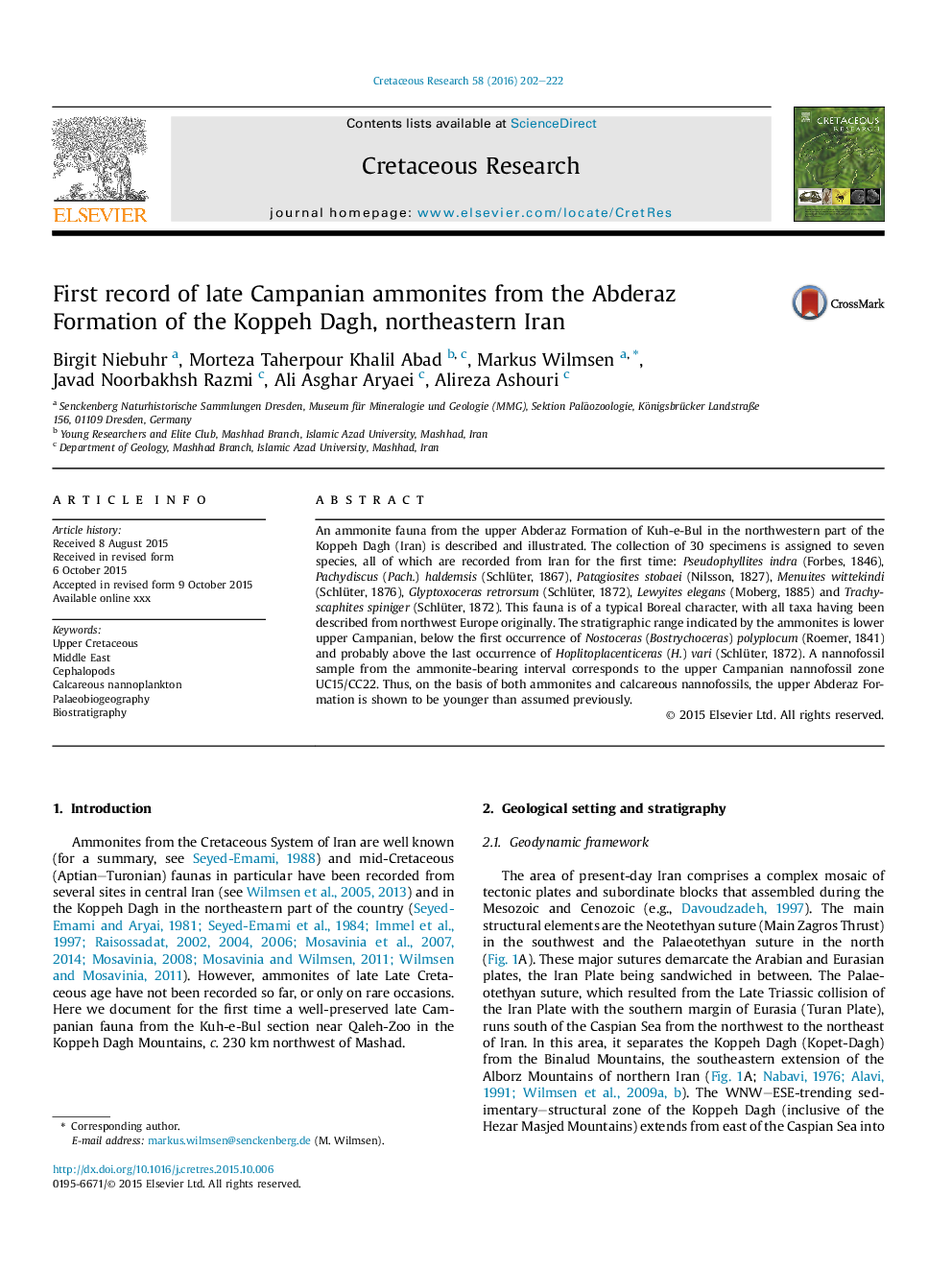| Article ID | Journal | Published Year | Pages | File Type |
|---|---|---|---|---|
| 6448218 | Cretaceous Research | 2016 | 21 Pages |
Abstract
An ammonite fauna from the upper Abderaz Formation of Kuh-e-Bul in the northwestern part of the Koppeh Dagh (Iran) is described and illustrated. The collection of 30 specimens is assigned to seven species, all of which are recorded from Iran for the first time: Pseudophyllites indra (Forbes, 1846), Pachydiscus (Pach.) haldemsis (Schlüter, 1867), Patagiosites stobaei (Nilsson, 1827), Menuites wittekindi (Schlüter, 1876), Glyptoxoceras retrorsum (Schlüter, 1872), Lewyites elegans (Moberg, 1885) and Trachyscaphites spiniger (Schlüter, 1872). This fauna is of a typical Boreal character, with all taxa having been described from northwest Europe originally. The stratigraphic range indicated by the ammonites is lower upper Campanian, below the first occurrence of Nostoceras (Bostrychoceras) polyplocum (Roemer, 1841) and probably above the last occurrence of Hoplitoplacenticeras (H.) vari (Schlüter, 1872). A nannofossil sample from the ammonite-bearing interval corresponds to the upper Campanian nannofossil zone UC15/CC22. Thus, on the basis of both ammonites and calcareous nannofossils, the upper Abderaz Formation is shown to be younger than assumed previously.
Keywords
Related Topics
Physical Sciences and Engineering
Earth and Planetary Sciences
Palaeontology
Authors
Birgit Niebuhr, Morteza Taherpour Khalil Abad, Markus Wilmsen, Javad Noorbakhsh Razmi, Ali Asghar Aryaei, Alireza Ashouri,
